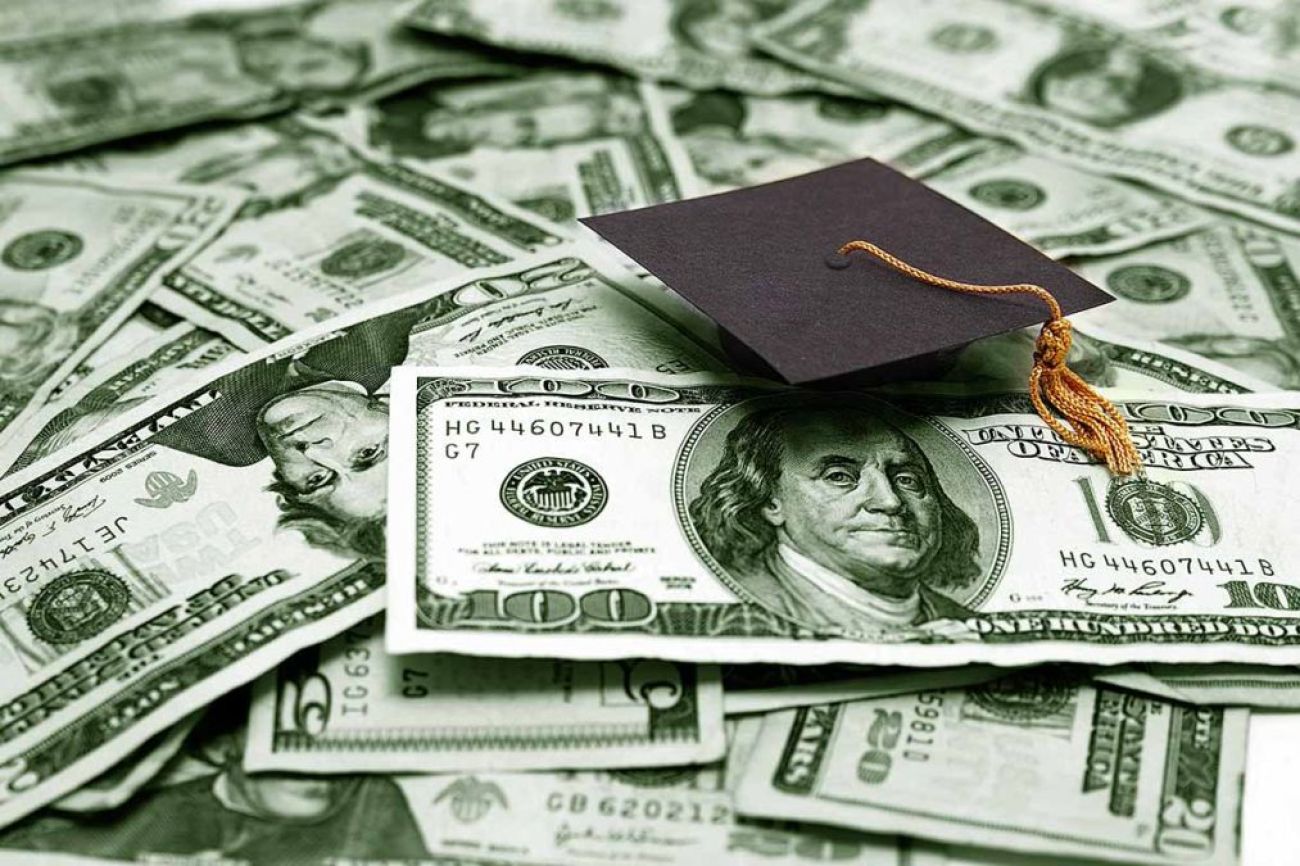What Biden student loan forgiveness means for Michigan


- The federal government is forgiving $47 million in student loan debt for 6,040 Michigan borrowers
- That’s a small fraction of the estimated 1.4 million student loan borrowers in Michigan
- The debt relief is part of the new income-driven repayment program announced last year by the Biden administration
About 6,000 Michigan student loan borrowers are having their debts automatically erased under a forgiveness plan by President Joe Biden, according to new data from the U.S. Department of Education.
The department announced Friday that 6,040 Michigan student loan borrowers with a total of $47 million in loans will be forgiven.
They are among nearly 153,000 student loan borrowers across the country who the White House said received an email from Biden this week announcing their loans were being forgiven under the Saving on a Valuable Education Plan, also known as SAVE.
Nationwide, the administration is forgiving $1.2 billion in student loans. Servicers have begun processing the forgiveness and borrowers’ accounts will reflect the forgiveness in the coming weeks, the administration said.
Related:
- How to get free tuition from Michigan colleges and universities
- Wayne State, Central Michigan push back deadlines because of FAFSA delay
- How delays in college financial aid offers will affect Michigan students
The forgiveness announcement affects only a small fraction of Michigan student loan borrowers.
The Education Data Initiative, a group that collects U.S. education data, estimated in 2022 there are a total of 1.4 million student loan borrowers in Michigan, with a collective debt of roughly $51 billion.
Michigan borrowers have an average student loan debt of $36,116.
Here is what to know about the loan forgiveness program.
Who is getting their loans forgiven right now?
Borrowers who are enrolled in the SAVE plan and have made at least 10 years of payments and have taken out $12,000 or less in loans are getting their debts forgiven.
If a borrower enrolled in the plan has more than $12,000 in debts, they must make more payments before their loans are forgiven. Every $1,000 in loans above $12,000 adds a year of required payments before forgiveness.
Like other income-driven repayment plans, the SAVE plan includes a provision where loans are forgiven after 20 or 25 years.
The Biden administration said it will continue to identify eligible borrowers and forgive additional loans on a regular basis.
What is the SAVE plan?
The SAVE plan is one of several repayment options federal student loan borrowers can use to pay off their debt. It is an income-driven repayment plan, meaning a borrower’s monthly bill is based on income and family size.
The Biden administration launched the program in August but had been working on it before the Supreme Court in June struck down the president’s broader plan that aimed to forgive up to $20,000 in student loan debt.
There are 7.5 million borrowers enrolled in the plan nationwide, according to a news release this week from the U.S. Department of Education.
Under the plan, payments are no more than 10% of a borrower’s discretionary income, and some borrowers have a $0 monthly payment. About 4.3 million borrowers have a $0 monthly payment, according to the Department.
The plan provides borrowers some protections related to unpaid interest. And starting in July, payments on undergraduate student loans will be capped at 5% of a borrower's discretionary income.
Who is eligible for forgiveness, and how do I apply for the SAVE plan?
Eligibility for the repayment plan is based on the type of federal student loan a borrower has. The federal government outlines which loans qualify on its website. The government also has its loan simulator which borrowers can use to compare different repayment plans.
Federal student loan borrowers can apply for the plan on the federal student aid website. You can preview what information you will need for the form at this link.
As of January, there were close to 240,000 Michigan student loan borrowers enrolled in the SAVE repayment program.
The Department of Education will reach out next week directly to borrowers who are eligible for forgiveness but are not currently enrolled in the SAVE plan, according a White House fact sheet. Borrowers will be encouraged to enroll in the repayment plan “as soon as possible.”
Is this different from the loan forgiveness plan the Supreme Court struck down last year?
Yes. The U.S. Supreme Court last summer struck down the Biden administration’s plan to forgive up to $20,000 of borrowers’ loans.
SAVE is a separate program. The Biden administration argues that it is using a regulatory process different from the pandemic-related authority the president tried to use to pass his original plan.
Will the SAVE plan have court challenges too?
It’s likely, according to Patrick Wright, vice president for legal affairs for the Mackinac Center for Public Policy, a free-market think tank that has sued the Biden administration over previous plans.
“This is continuing, essentially, to the pattern which we see as problematic, which is that the administration is trying to do through executive orders what they should be doing through legislation,” he said.
“They have tried repeatedly to get student loan legislation through Congress. They have repeatedly failed and they are not allowed to unilaterally change a trillion dollar program without legislative authorization.”
The Mackinac Center previously sued over programs to eliminate debt for certain income-driven repayment borrowers and extend a COVID-19 payment pause plan beyond the initial months of the pandemic.
The SAVE plan, along with other income-driven repayment plans, include a minimum number of payments that must be made before remaining balances can be forgiven.
Are there other ways to get my federal loans forgiven?
Yes. There are national programs to forgive qualifying borrowers’ loans, including one called Public Service Loan Forgiveness.
Under that program, borrowers who work full-time for their local, tribal, state or federal government or an eligible nonprofit organization may qualify for having their loans forgiven after 10 years if they’ve made monthly payments.
Other income-driven repayment programs forgive loan balances after a borrower has made 20 or 25 years worth of qualifying payments.
The federal government also has a Teacher Loan Forgiveness Program that can forgive up to $17,500 in student loans for borrowers who teach for five consecutive years at a low-income school.
The Biden administration is also working on a proposal to forgive loans “for borrowers experiencing hardship,” according to a Friday news release.
Does Michigan offer any specific loan forgiveness programs?
The state also has a new $225 million program to help public school district employees pay back their federal loans.
Michigan lawmakers approved the program last summer as part of the state’s budget but student loan borrowers do not yet have access to these funds.
The funds would go toward an employee’s monthly payments with the idea that the employee would eventually qualify for public service loan forgiveness.
The state funding is expected to provide up to $200 per month per qualifying borrower, and up to $400 for borrowers who work in a high-poverty school district, according to the state education budget.
School districts are responsible for applying for the funds and the Michigan Department of Education anticipates opening up the application process in late February, according to a frequently asked questions list.
See what new members are saying about why they donated to Bridge Michigan:
- “In order for this information to be accurate and unbiased it must be underwritten by its readers, not by special interests.” - Larry S.
- “Not many other media sources report on the topics Bridge does.” - Susan B.
- “Your journalism is outstanding and rare these days.” - Mark S.
If you want to ensure the future of nonpartisan, nonprofit Michigan journalism, please become a member today. You, too, will be asked why you donated and maybe we'll feature your quote next time!


